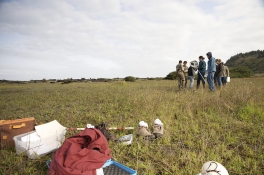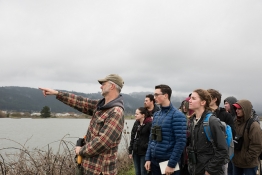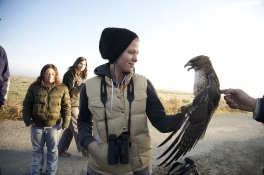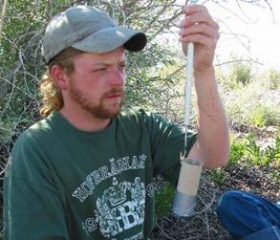Chris Tonra
After Humboldt, Chris went on for a PhD at University of Maine and then on to be a professor at The Ohio State University.
For his Humboldt thesis, Chris’ project examined the influence of habitat, chick gender, and host density on the hatching synchrony of an obligate brood parasite, the Brown-headed Cowbird (Molothrus ater), in the riparian corridors of four tributaries of Mono Lake, CA. Hatching synchrony refers to the relative order of hatching of young cowbirds and host species’ eggs. Successful female cowbirds should optimize the laying of their eggs in hosts’ nests so that their young can successfully (out)compete their host nestmates. Several ecological variables, may affect a cowbirds ability to find and monitor nests to ensure optimal timing such as habitat features, host nest density, and the sex egg since development times may be different for the sexes. Chris monitored bests of the two primary cowbird hosts in this region, Song Sparrow (Melospiza melodia) and Yellow Warbler (Dendroica petechia), measured habitat features, and used genetic techniques to sex the young cowbirds in order to test these hypotheses.







